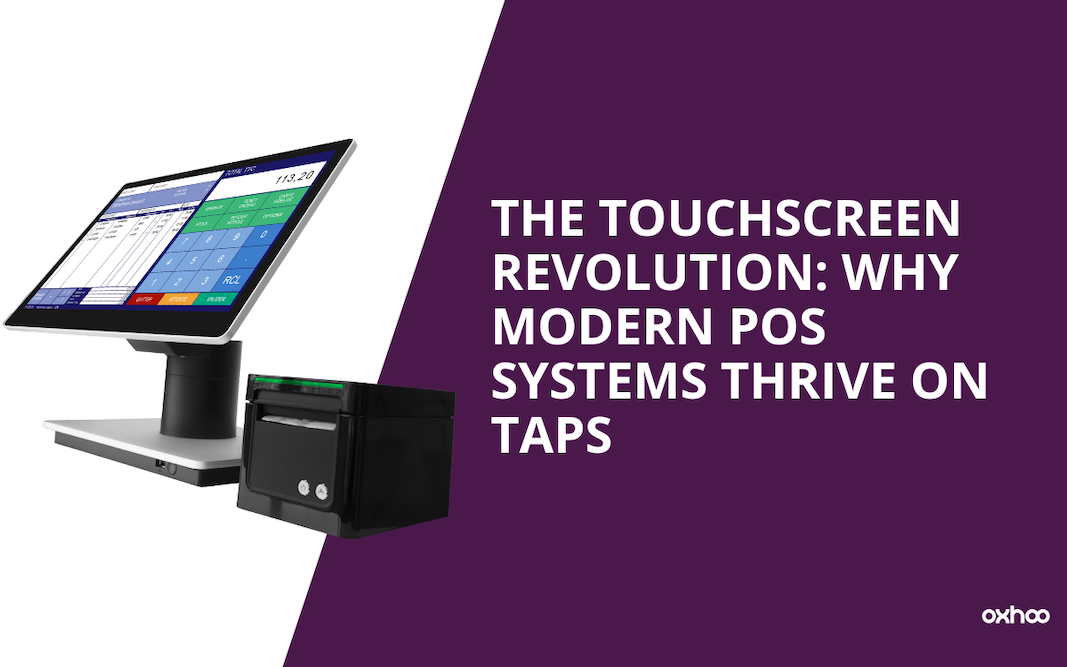Ever wondered what happened to PC-style mouse-and-keyboard POS terminals? They are still out there, although these days they are very much a legacy technology.
Walk into any shop, bar, restaurant, or hotel these days – anywhere you might find a POS system, in fact – it’s a very safe bet that nearly all of them will have one thing in common. They’ll all have a touchscreen interface. And not just the checkout-type terminals, either. Self-service kiosks all feature touchscreens as standard. As do the mobile POS tablets that are increasingly popular.
So what is it about touchscreens that have made them such a must-have feature of modern POS systems?
Familiar and intuitive: One of the big factors in why touchscreens have taken over POS is the fact that they are so ubiquitous in people’s day-to-day lives. Most people use a smartphone even more than they use a PC these days, and start using them at a young age too. Most people are comfortable and familiar with the tap and swipe controls of a touchscreen, which are incredibly easy and intuitive to learn in the first place.
Speed and Efficiency: Touchscreens excel at simplifying complex tasks. With a well-designed interface, staff can navigate menus, input orders, and process payments with just a few taps. This eliminates the need to memorise keyboard shortcuts or wrestle with a mouse, significantly reducing transaction times. Faster checkouts translate to shorter queues, happier customers, and the ability to serve more patrons during peak hours.
Reduced Errors: Traditional POS systems with manual data entry are prone to human error. Typos on the keyboard or accidentally hitting the wrong key can lead to incorrect pricing, order mistakes, and frustrated customers. Touchscreens minimise these errors by offering pre-programmed menus and buttons.
Enhanced Customer Experience: Naturally, when you speed up processes and reduce errors, you are going to create a more positive customer experience overall. In addition to these benefits, touchscreens serve as very flexible digital displays and make it easy to share product information, images, and even upsell recommendations with customers. This is especially obvious with self-service kiosks, where interactive displays serve to empower customers to make informed decisions at their own pace and potentially discover new products they might be interested in.
Improved Staff Training: We’ve mentioned how touchscreen interfaces are inherently user-friendly and familiar to most people. This helps to make training new staff on a POS system a breeze. Simpler controls and the ability to pick up processes faster translate to a quicker onboarding process and free up valuable time for managers.
Increased Versatility: Modern touchscreen POS systems are much more than just cash registers. They can be integrated with various functionalities, such as inventory management, customer loyalty programs, and even marketing tools. With a few taps, staff can access inventory levels in real-time, update product information, or offer targeted promotions to customers. Simpler, more intuitive, more efficient interfaces that staff pick up quicker are essential for making this greater range of functionalities manageable.
All in all, the intuitive and user-friendly nature of touchscreens makes them the clear choice for modern POS systems. They offer a plethora of benefits, from faster transactions and reduced errors to improved customer experiences and increased staff efficiency. As technology continues to evolve, we can expect even more advanced functionalities to be integrated with touchscreen POS systems, further solidifying their position as a cornerstone of successful businesses in the years to come.
